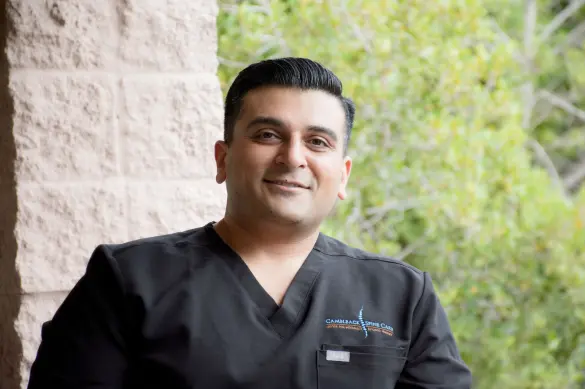

Degenerative disc disease is something that happens as a result of wear and tear of the spinal discs that sit between your vertebrae. Spinal discs are flexible pads that act as shock absorbers to prevent damage to the spine. They also help you bend and twist, allowing you to move freely.
As you age, your spinal discs become less flexible, and eventually become thinner and start to break down. This happens to most people to some degree, although it doesn’t always cause pain. Our experienced degenerative disc doctors explain that timely care can help prevent worsening symptoms.
Changes that take place in the spinal discs and led to degenerative disc disease include:
Drying out
In your youth, your spinal discs are composed chiefly of water, but as the years go by, the quantity of water in the discs reduces. The soft centers of the discs dry out and make the discs flatten, which in turn makes them less effective as shock absorbers. This is one of the most common reasons patients seek degenerative disc treatment with our specialists.
Cracking and bulging
The tough outer shell of spinal discs can suffer damage after years of use, leading to tiny tears that can be painful if they affect the nerves. In some instances, the outer wall of the disc can rupture, allowing the soft center to squeeze through the opening. Sometimes the disc bulges out of the vertebrae and presses on nearby nerves, a condition called a herniated disc. Our spine doctors near you evaluate these changes and recommend the best care plan.
<>Our doctors go through your symptoms with you and check your medical history before examining your spine to see if there are any obvious problems. They may also order an X-ray or MRI scan to check the bones and discs in more detail.
Treatment for degenerative disc disease centers on easing the pain and preventing further damage to the discs. Standard over-the-counter medications may be sufficient to relieve pain and reduce inflammation; if they are not, doctors might recommend a steroid injection.
Building up the back and neck muscles with physical therapy can also help support your spine, and regenerative medicine techniques like platelet-rich plasma (PRP) therapy could also be beneficial. Our degenerative disc specialists often recommend combining non-surgical spine care with lifestyle improvements for long-term relief.
If these treatments aren’t providing you with relief, our team can discuss surgical options with you. They can perform a lumbar fusion or anterior lumbar fusion to fuse the vertebrae together, or an anterior cervical discectomy and fusion (ACDF), which involves removing the disc that’s putting pressure on the nerves and replacing it with an artificial one. With our expertise, you’ll be cared for by some of the best spine specialists in Arizona.
If you have back pain, let our doctors help. Call Camelback Spine Care today or book an appointment online with our experienced degenerative disc treatment specialists in Phoenix and Sun City.
WHAT WE OFFER

Neck Pain
LEARN MORE
Osteoporosis
LEARN MORE
Lower Back Pain
LEARN MORE
Arthritis
LEARN MORE
Herniated Disc
LEARN MORE
Spinal Stenosis
LEARN MORE
Degenerative Disc
LEARN MORE
Scoliosis
LEARN MORE

